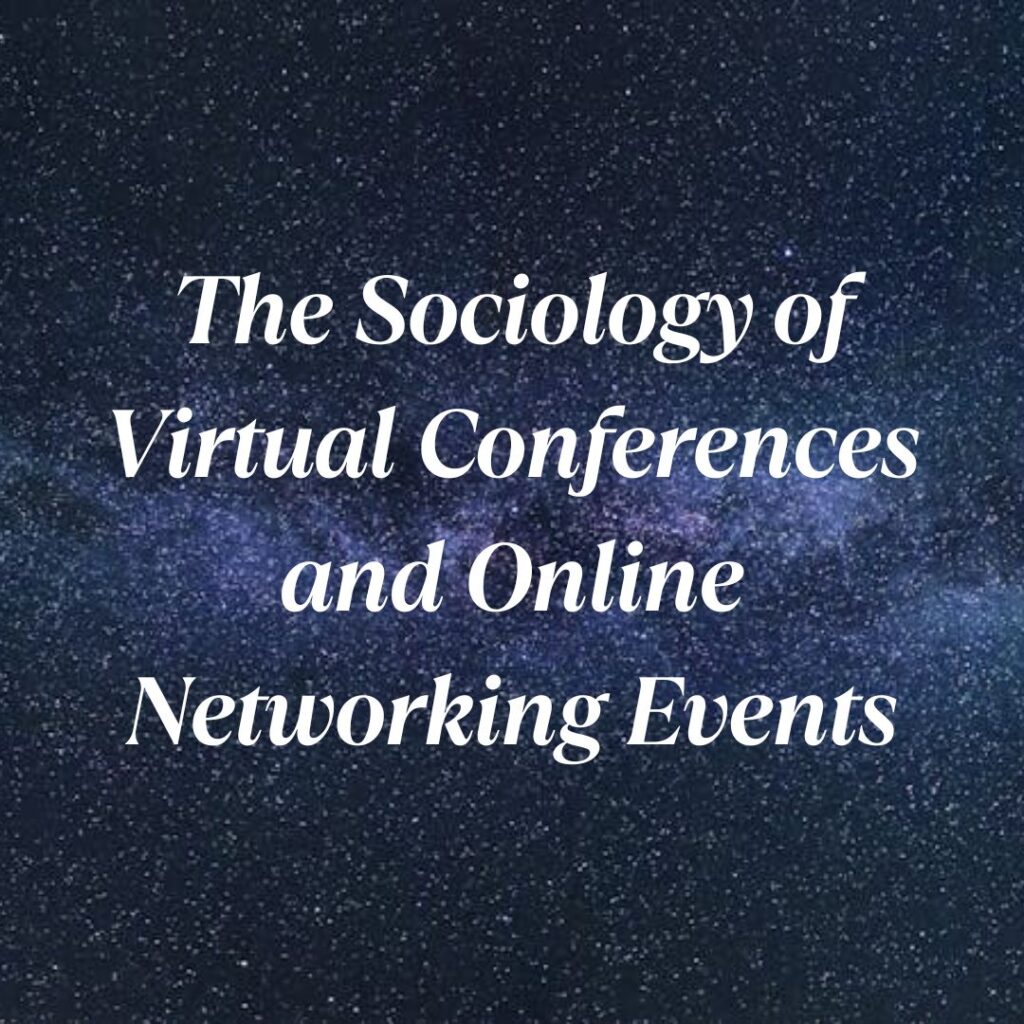In the rapidly evolving landscape of professional interactions, virtual conferences and online networking events have emerged as pivotal arenas for connection, collaboration, and knowledge sharing. These digital platforms have not only reshaped how professionals engage but also reflect broader sociological shifts in communication, community building, and the nature of work itself. This article delves into the sociology behind virtual conferences and online networking events, exploring their impact, dynamics, and significance in contemporary society.
Evolution of Professional Interaction
Traditionally, conferences and networking events were confined to physical spaces, requiring travel and logistical arrangements. However, with advancements in technology and the global connectivity afforded by the internet, virtual alternatives have gained immense popularity. This evolution has democratized access, allowing professionals from diverse backgrounds and geographical locations to participate without the constraints of physical presence.
Dynamics of Virtual Engagement
Virtual conferences and online networking events leverage various digital tools to facilitate interaction. Platforms like Zoom, Microsoft Teams, and specialized virtual event software offer features such as live streaming, chat rooms, and virtual breakout sessions. These tools mimic face-to-face interactions to varying extents, aiming to replicate the spontaneity and engagement of physical events in a digital environment.
Sociological Implications
- Accessibility and Inclusivity: Virtual events transcend barriers of geography, time zones, and physical mobility, enabling broader participation. This inclusivity fosters diversity of perspectives and enhances opportunities for networking across demographic boundaries.
Example: The shift to virtual formats during the COVID-19 pandemic allowed individuals who might not afford travel expenses or have childcare responsibilities to participate actively in global conferences. - Network Formation and Social Capital: Networking, a cornerstone of professional success, extends beyond mere exchange of business cards. Online platforms facilitate the formation of digital communities where professionals can cultivate relationships, share knowledge, and build social capital.
Example: LinkedIn’s virtual networking events have become instrumental in connecting professionals from various industries, enabling them to exchange insights and establish meaningful professional relationships remotely. - Technological Mediation of Interaction: The mediation of human interaction through technology introduces unique dynamics. Non-verbal cues, crucial for understanding in face-to-face communication, may be muted or altered in virtual settings, influencing perceptions and interactions.
Example: Studies show that emojis and reaction buttons on virtual platforms serve as substitutes for facial expressions and gestures, affecting how participants interpret and respond to messages. - Psychological and Emotional Dimensions: Virtual interactions can evoke a range of emotions, from excitement and engagement to feelings of isolation or digital fatigue. Understanding these emotional responses is crucial for designing inclusive and engaging virtual experiences.
Example: Research indicates that prolonged virtual engagement without breaks or varied interaction formats can lead to burnout among participants, highlighting the importance of balanced event design.
The Role of Technology and Innovation
Advancements in virtual event technology continue to shape the sociology of professional networking and conferencing. Artificial intelligence (AI) and machine learning algorithms are being integrated to personalize user experiences, predict attendee preferences, and optimize event outcomes. Moreover, immersive technologies such as virtual reality (VR) are increasingly being explored to enhance participant engagement and simulate real-world interactions.
Challenges and Future Directions
While virtual conferences offer unprecedented opportunities, they also pose challenges. Issues like digital inequality, privacy concerns, and technological glitches need to be addressed to ensure equitable access and participant satisfaction. Moreover, the hybridization of events (combining virtual and physical elements) is likely to become the norm, requiring adaptable strategies for event organizers and participants alike.
Conclusion
Virtual conferences and online networking events are not merely technological innovations but transformative sociological phenomena. They redefine how professionals connect, collaborate, and create value in an increasingly digital world. By understanding the sociological underpinnings of these platforms, stakeholders can harness their potential to foster inclusive communities, drive innovation, and navigate the evolving landscape of professional interactions.
In conclusion, the sociology of virtual conferences and online networking events offers a fascinating glimpse into the intersection of technology, society, and professional dynamics. As these platforms continue to evolve, their impact on communication norms, community formation, and organizational practices will shape the future of work and collaboration in profound ways.







